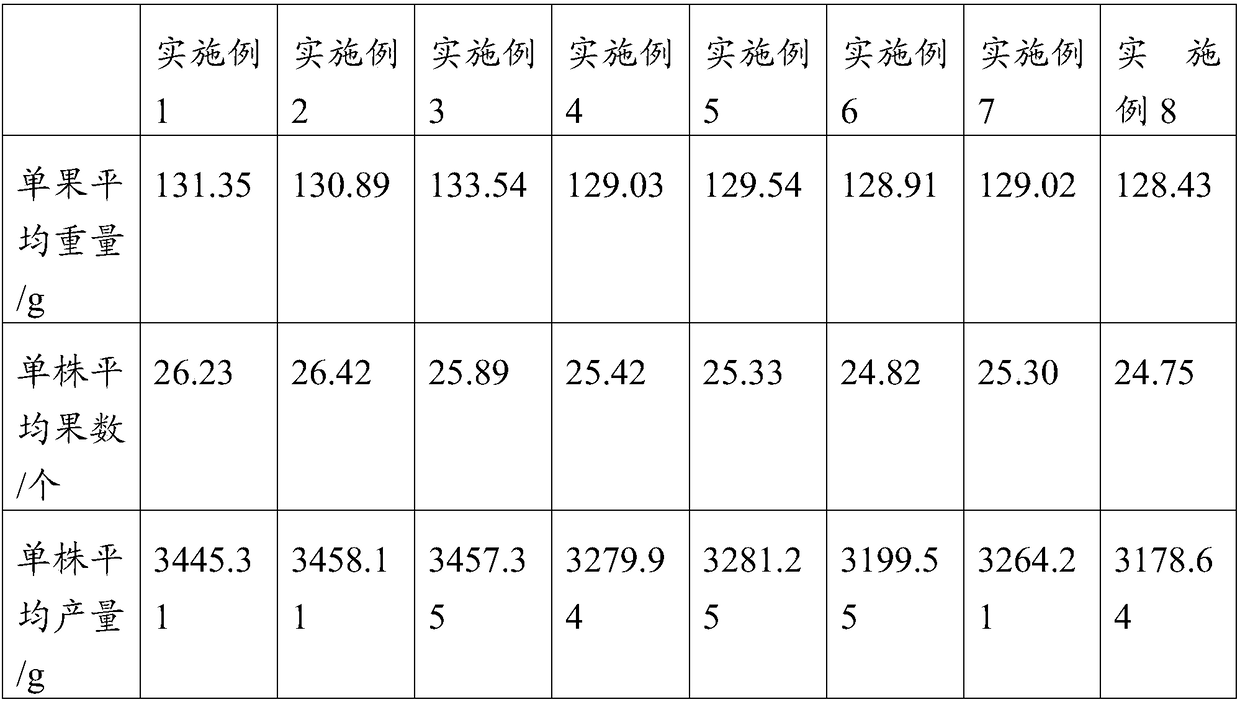No-tillage tomato cultivation method
A cultivation method, tomato technology, applied in fruit tree cultivation, botany equipment and method, plant protective cover, etc., can solve the problem that tomato roots cannot absorb water and nutrients well, soil structure, temperature, water content conditions are poor, soil And fertilizer loss with water and other problems, to achieve the effect of promoting photosynthesis, water is not easy, and is conducive to absorption and utilization
- Summary
- Abstract
- Description
- Claims
- Application Information
AI Technical Summary
Problems solved by technology
Method used
Image
Examples
Embodiment 1
[0030] (1) Seedling preparation: select high-quality rootstocks with strong resistance and scion varieties with excellent economic traits, cultivate the prepared scions and rootstocks to 5 true leaves, keep ventilation and shading during the cultivation process, and select high-quality rootstocks that are resistant to bacterial wilt , Varieties resistant to root-knot nematode and Fusarium wilt;
[0031] (2) Grafting management: adopt the casing sticking method to graft the scion onto the rootstock, cultivate and water in an appropriate amount below the grafting wound, then gradually increase its light and increase the amount of drip irrigation water, and the time for dark cultivation is three days. Gradually increase the light to replace the shading cloth with a shading net for the first two days after the light-off period, so that a small amount of sunlight can fall on the seedbed, then replace the shading net with a translucent shading film and cultivate for two days, and the...
Embodiment 2
[0036] (1) Seedling preparation: select high-quality rootstocks with strong resistance and scion varieties with excellent economic traits, cultivate the prepared scions and rootstocks to 6 true leaves, keep ventilation and shading during the cultivation process, and select high-quality rootstocks that are resistant to bacterial wilt , Varieties resistant to root-knot nematode and Fusarium wilt;
[0037] (2) Grafting management: adopt the casing sticking method to graft the scion onto the rootstock, cultivate and water in an appropriate amount below the grafting wound, then gradually increase its light and increase the amount of drip irrigation water at the same time, and the time for dark cultivation is two days. Gradually increase the light to replace the shading cloth with a shading net for the first two days after the light-off period, so that a small amount of sunlight can fall on the seedbed, then replace the shading net with a translucent shading film and cultivate for on...
Embodiment 3
[0042] (1) Seedling preparation: select high-quality rootstocks with strong resistance and scion varieties with excellent economic traits, cultivate the prepared scions and rootstocks to 5 true leaves, keep ventilation and shading during the cultivation process, and select high-quality rootstocks that are resistant to bacterial wilt , Varieties resistant to root-knot nematode and Fusarium wilt;
[0043] (2) Grafting management: adopt the casing sticking method to graft the scion onto the rootstock, cultivate and water in an appropriate amount below the grafting interface, then gradually increase its light and increase the amount of drip irrigation water at the same time, and the time for dark cultivation is three days. Gradually increase the light to replace the shading cloth with a shading net for the first two days after the light-off period, so that a small amount of sunlight can fall on the seedbed, then replace the shading net with a translucent shading film and cultivate ...
PUM
 Login to View More
Login to View More Abstract
Description
Claims
Application Information
 Login to View More
Login to View More - R&D
- Intellectual Property
- Life Sciences
- Materials
- Tech Scout
- Unparalleled Data Quality
- Higher Quality Content
- 60% Fewer Hallucinations
Browse by: Latest US Patents, China's latest patents, Technical Efficacy Thesaurus, Application Domain, Technology Topic, Popular Technical Reports.
© 2025 PatSnap. All rights reserved.Legal|Privacy policy|Modern Slavery Act Transparency Statement|Sitemap|About US| Contact US: help@patsnap.com

